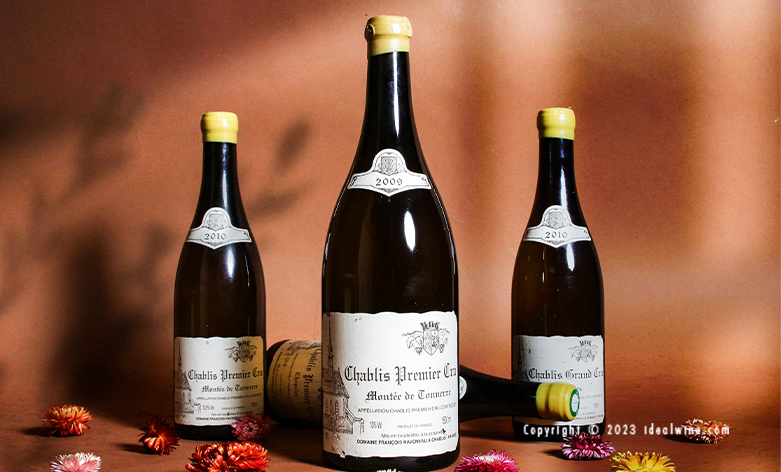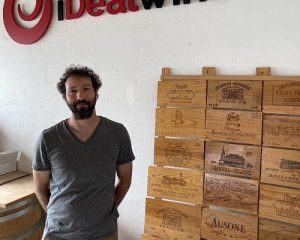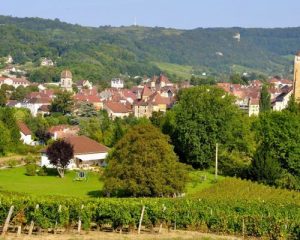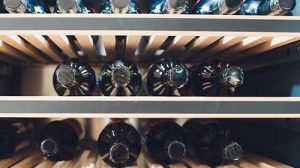
Picture this: you discovered Raveneau a long time ago and your collection is full of its bottles, but you’re starting to wonder what else Chablis has to offer. Or, alternatively, you fell in love with Raveneau when you had the opportunity to taste it, but your purse strings won’t stretch far enough to buy a bottle or two. If you can see yourself in either of these descriptions, we have some good news for you because, in this article, we’re going to take a look at what makes Raveneau, well, Raveneau and explore two estates that produce wines that you might just like.
Raveneau in a nutshell
Domaine Raveneau was founded in 1948 by François Raveneau, who was the first in the family to bottle his wine. Before that, the family had sold the grapes they grew. Jean-Marie and Bernard Raveneau, François’ sons, lead the estate today which has become one of the most sought-after names in the Chablis appellation. Still following traditional methods (harvesting by hand and controlled yields), the vineyard now covers eight hectares, divided into five premier crus and three grand crus plots. Jean-Marie and Bernard Raveneau maintain the desire for perfection that has always been attributed to the winery. For example, they prefer to harvest early to ensure a good level of natural acidity, rather than picking over-ripened fruit.
The estate’s wines are consistently harmonious, with superb minerality, pronounced lemon aromas and flint notes. They also possess a honeyed touch from their time spent maturing in wood. Their worldwide reputation means that the wines are practically unobtainable, but you can find them in iDealwine auctions from time to time. That being said, it can be difficult to purchase Raveneau wines at a fixed price because the estate no longer accepts new customers with all its harvest being reserved in advance. This is another reason it can be good to explore other wineries…
And more broadly speaking, what is Chablis wine like?
As Chablis is crafted from Chardonnay grapes grown in a very cool climate, the wines tends to possess aromas of lemon and green apple as well as mineral and iodine notes coming from the Kimmeridgian marl soil. The grapes retain their acidity, creating highly acidic wines that are fresh and taut. They pair well with seafood (with a classic French pairing being oysters) fish, creamy cheese and poultry in a creamy sauce as well as risotto made with green vegetables, mushrooms or white truffle.
What should I choose if I would like to find something similar to Raveneau?
Jean-Paul and Benoît Droin
Jean-Paul and Benoît Droin run one of the oldest wineries in Chablis. Their family started growing vines here way back in 1547. Handed down from generation to generation, the current father-son duo tends 26 hectares, including five grand crus and eight premier crus plots. Their hard work has brought the estate to the top of Chablis’ rankings with it being rated 3/3 by the French wine magazine La Revue du Vin de France, just like Raveneau.
The wines are precise and generous with a fine mineral persistence. They generally possess a lot of citrus fruit flavours and depending on which plot the wine comes from, these aromas can be joined by white and yellow fruits and flint. The palate is rich, rounded and persistent. Some of the winery’s wines can often spend many years in the cellar, for some 20 years would not pose a problem, where they develop tertiary aromas. Similar to Raveneau, the cuvées are bursting to the brim with citrus notes which are joined by flint but in contrast, the short maturation period in the winery leads to notes from the lees and toasted aromas when the wines are young.
Jean Dauvissat
This Chablis rising star should not be confused with other wineries bearing the Dauvissat name. Working on 22 hectares, Jean Dauvissat aims to allow the terroir to shine through in the wines he crafts. The vines, which can be found in Petit Chablis, Chablis and Chablis premier cru plots, are grown using organic principles and some biodynamic methods have also been used since 2018. Plenty of citrus fruits come through when tasting the wines along with white fruits and some floral notes. They are lively, chiselled and very mineral. Depending on the cuvée, the bottles can be left to mature for a few years in the cellar before being savoured with a scallop dish, for example. It probably comes at no surprise that these Chablis wines possess plenty of lemon flavours and high minerality like Raveneau’s wines do. And if you would like to savour Jean Dauvissat’s wines sooner rather than later, then you can. Open them now if you wish as they can be enjoyed in their youth. What is more, they are produced in an organic manner which also sets them apart from the legendary producer’s cuvées.
Both Jean-Paul and Benoît Droin and Jean Dauvissat offer good alternatives to Raveneau wines while also bringing something different along with them. Droin has its yellow fruits – think succulent peaches – while Dauvissat has its delicate floral aromas. So next time you can’t get your hands on a bottle of Raveneau, why not change things up and go for either of these Chablis gems? Let us know what you think of them!



